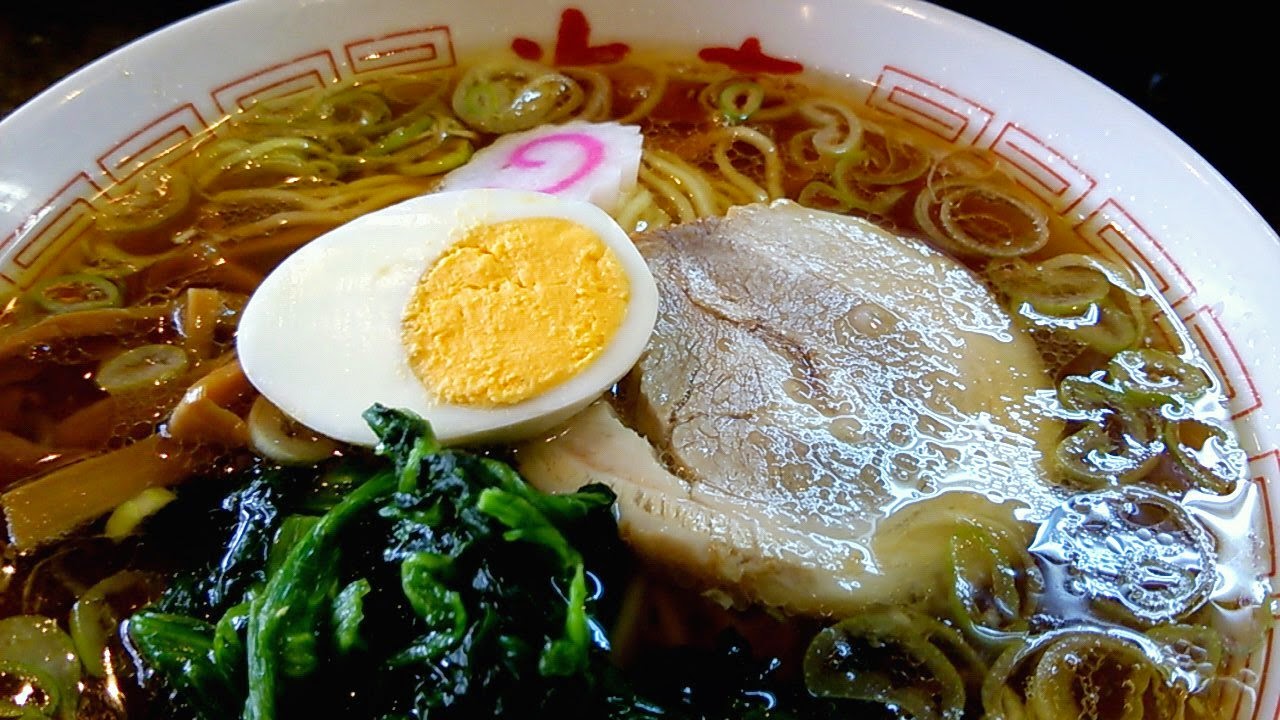Korai-kei isn't as well known as its more famous brothers such as Yokohama Ie-kei, or even the sloppy Jiro-kei, but it's much healthier than either of those pork intensive bowls. A speciality of Nagoya's Chikusa ward, these are bowls made of pork and chicken stock, dried bonito, and lots of vegetables. The bowls are so clean they supposedly have medicinal properties.
Koyoken, a mom and pop run single counter, is one of the best in the area.
Korai-kei ramen is ordered by Matsu, Take, and Ume, the three kanji in the word shochikubai (松竹梅 ), which translate to "pine, bamboo, and plum." The words together signify the "three friends of winter" and are commonly used for greeting cards and celebratory events, though most people probably know the word from the mediocre sake.
Anyway, the Matsu is the standard bowl at any korai-kei shop. A few thick bamboo shoots, thick and curly noodles, and thinly sliced round chashu.
 |
| Matsu (800yen) |
A slightly cloudy soup is famous for being light on oil but dense with flavor. Despite the richness of the soup, no one ingredient stands out. People have trouble describing the taste of korai-kei, since the flavors of the ingredients tend to blend together.
Noodles are thick and curly in korai-kei bowls, with a lot of bite and chew.
Korai-kei is also famous for the menma, or fermented bamboo shoots. I ordered the Take, naturally, which includes a little too much bamboo.
 |
| Take (1100yen) |
As you can (or can't) see, the bamboo tends to obscure everything in the bowl. My uncle ordered the Oo-take, which is just obscene and overflowing with menma. The menma are thick and delicious, but its exhausting chewing these things one after another.
Ramenma Love!
Aichi, Nagoya, Showa-ku, Hiromicho 2-21-3
Closest stn: Sakurayama
Open from 11am-3pm and 5-8pm (closed Thursdays)
Hearts




















